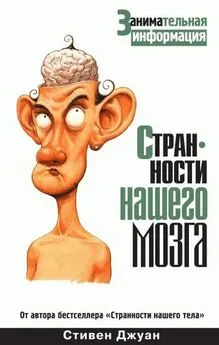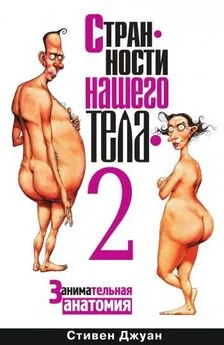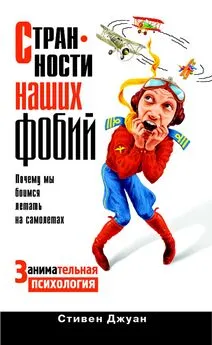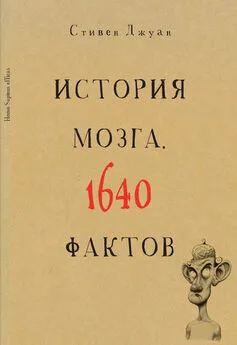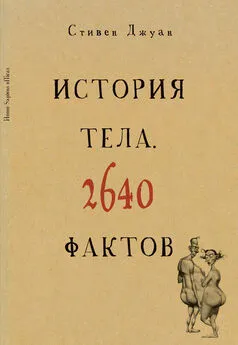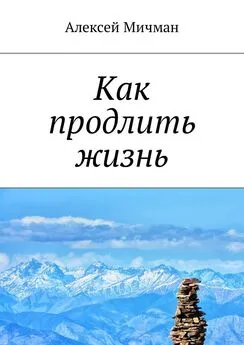Стивен Джуан - Могут ли поцелуи продлить жизнь?
- Название:Могут ли поцелуи продлить жизнь?
- Автор:
- Жанр:
- Издательство:Литагент «РИПОЛ»15e304c3-8310-102d-9ab1-2309c0a91052
- Год:2011
- Город:Москва
- ISBN:978-5-386-02692-9
- Рейтинг:
- Избранное:Добавить в избранное
-
Отзывы:
-
Ваша оценка:
Стивен Джуан - Могут ли поцелуи продлить жизнь? краткое содержание
Доктор Стивен Джуан – ученый-антрополог, автор мировых бестселлеров «Странности нашего тела» и «Странности нашего мозга». Родился и вырос в США, сейчас живет в Австралии, где преподает в университете и выступает на радио и телевидении. В новой книге доктор Джуан продолжает искать объяснение самым странным странностям нашей жизни.
Можно ли доверять детектору лжи?
Почему беременных тошнит по утрам?
Почему одних людей комары кусают чаще других?
Можно ли клонировать неандертальца?
Можно ли определить характер человека по его ушам?
Ответы на эти и другие вопросы вы найдете в этой книге.
Могут ли поцелуи продлить жизнь? - читать онлайн бесплатно ознакомительный отрывок
Интервал:
Закладка:
312
J. Walters and A. O’Donoghue, ‘Mozzie attack’, New Scientist, 12 April 1997, p. 65.
313
J. Richfi eld and Y. Van Bergen, ‘Biting back’, New Scientist, 29 April 2006, p. 73.
314
S. Juan, ‘Why are some people more attractive to mosquitoes?’, The Register, 10 November 2006.
315
Dr Steven Schutz is from the Mosquito Control Research Laboratory of the University of California at Davis.
316
D. Feldman, What are Hyenas Laughing at, Anyway? pp. 177–178.
317
S. Juan, ‘How can objects in the same room be different temperatures?’, The Register, 10 November 2006.
318
W. Fitzpatrick, An Open Letter to the World About Colloidal Silver, Argyria Information Website, 13 November 2006.
319
British Broadcasting Commission, ‘True-blue bids for Senate’, BBC News (London), 2 October 2002.
320
S. Juan, ‘How the “true blue” political maverick gave the Senate to the donkeys’, The Register, 9 December 2006.
321
Drs Alan Ashworth, B. Howard, H. Panchal and A. Mc-Carthy are from the Breakthrough Breast Cancer Research Centre in London.
322
A. Ashworth et al., ‘Identifi cation of the scaramanga gene implicates Neuregulin 3 in mammary gland specifi cation’, Genes and Development, 2005, vol. 17, no. 17, pp. 2078–2090.
323
Drs D.M. Conde, E. Kashimoto, R. Torresan and M. Alvarenga are from the Department of Gynecology and Obstetrics at the Hospital Estadual Sumare and the Universidade Estadual de Campinas in Sumara, Brazil.
324
D. Conde et al., ‘Pseudomamma on the foot: An unusual presentation of supernumerary breast tissue”, Dermatology Online Journal, 2006, vol. 12, no. 4, p. 7.
325
S. Juan, ‘Why do some people have three nipples?’, The Register, 13 January 2006.
326
Dr C.R. Goding is from the Marie Curie Research Institute in Surrey, UK.
327
C. Goding, ‘Melanocytes: The new black”, International Journal of Biochemistry and Cell Biology, 2007, vol. 39, no. 2, pp. 275–279.
328
Personal communication, 22 December 2006.
329
S. Juan, ‘Why do we like to scratch a wound when it’s healing?’, The Register, 10 February 2007.
330
Drs Hui-Jun Ma, G. Zhao, F. Shi and Y. Wang are from the Department of Dermatology at the Air Force Hospital of the Chinese People’s Liberation Army in Beijing.
331
H. Ma et al., ‘Eruptive cherry angiomas associated with vitiligo: Provoked by topical nitrogen mustard?’, Journal of Dermatology, 2006, vol. 33, no. 12, p. 877.
332
EnergyAustralia, Shower Timers Help Families Become Energy Effi cient, Energy Australia, Sydney, October 2006.
333
S. Juan, ‘Do we really need a daily shower or bath to stay healthy?’, The Register, 17 February 2007.
334
S. Juan, ‘Great moments in human research’, The Register, 27 January 2007.
335
S. Juan, ‘Great moments in human research”, The Register, 3 February 2007.
336
M. Sims, Adam’s Navel: A Natural and Cultural History of the Human Form, Viking, New York, 2003, pp. 25–27.
337
S. Juan, ‘Why we are not naked even in the womb’, The Register, 7 May 2006.
338
M. Symons, Why Girls Can’t Throw:… and Other Questions You Always Wanted Answered, Harper Paperbacks, New York, 2006, pp. 172–173.
339
S. Juan, ‘Will eating crusts make your hair grow curly?’, The Register, 4 August 2006.
340
S.Juan, ‘Keeping it in the family’, National Post, 20 November 2006, pp. 1–2.
341
H. Sustaita, A Close Look at the Properties of Hair and Scalp, Houston Community College – Northwest, Houston, 2006, pp. 7–9.
342
S. Juan, ‘Why isn’t pubic hair the same colour as hair on your head?’, The Register, 15 September 2006.
343
Dr John O’Connor is head of the School of Physical Science and Mathematics at the University of Newcastle in Australia.
344
Personal communication, 12 August 2006.
345
S. Juan, ‘Can your hair turn white as a result of shock?’, The Register, 29 September 2006.
346
Dr John Mason is a trichologist from Royston near Barnsley in South Yorkshire, UK.
347
J. Mason, ‘The role of the trichologist’, Clinical and Experimental Dermatology, 2002, vol. 27, no. 5, pp. 422–425.
348
Personal communication, 12 November 2006.
349
S.Juan, ‘Why is the human face hairless?’, The Register, 20 January 2007.
350
P. Abrahams, How the Body Works, Amber Books, London, 2007. p. 415.
351
Dr Alan Greene is a clinical professor at the School of Medicine at Stanford University and chief medical officer of ADAM, a medical information organisation.
352
Dr Robert Baran is from the Nail Disease Centre in Cannes, France.
353
J. Brody, ‘Fingernails can reveal much about habits and health’, New York Times, 22 January 1990, pp. B3—B4.
354
Committee on Sports Medicine and Fitness and Council on School Health, American Academy of Pediatrics, Active healthy living: Prevention of childhood obesity through increased physical activity’, Pediatrics, 2006, vol. 171, no. 5, pp. 1834–1842.
355
National Association for Sport and Physical Education, Active Start: A Statement of Physical Activity Guidelines for Children Birth to Five Years, National Association for Sport and Physical Education, Reston, Virginia, 2001.
356
Centre for Community Child Health, Royal Children’s Hospital, Melbourne, ‘Leaping early in life”, Community Paediatric Review, 2006, vol. 15, no. 4, pp. 4–5.
357
H. Klawans, Strange Behaviour: Tales of Evolutionary Neurology, Norton, New York, 2000, pp. 37–38.
358
Drs A.K. Tan and C.B. Tan are from the Department of Neurology at Tan Tock Seng Hospital in Singapore.
359
A. Tan and C. Tan, ‘The syndrome of painful legs and moving toes – a case report’, Singapore Medical Journal, 1996, vol. 37, no. 4, pp. 446–447.
360
M. Sims, Adam’s Navel: A Natural and Cultural History of the Human Form, Penguin Books Australia, Melbourne, 2004, pp. 292–295.
361
Drs S.S. Campbell and P.J. Murphy are from the Laboratory of Human Chronobiology in the Department of Psychiatry at Cornell University Medical College in White Plains, New York.
362
S. Campbell and P. Murphy, ‘Extraocular circadian phototransduction in humans’, Science, 1998, vol. 279 (5349), pp. 333–334.
363
K. Hopkin, ‘Clock setting’, Scientifi c American, April 1998, pp. 20–22.
364
Dr S. Ooki is from the Department of Health Science of Ishikawa Prefectural Nursing University in Kahoku, Japan.
365
S. Ooki, ‘Genetic and environmental influences on fi ngersucking and nail-biting in Japanese twin children’, Twin Research and Human Genetics, 2005, vol. 8, no. 4, pp. 320–327.
366
Drs B. Mangweth, A. Hausmann, C. Danzl, T. Walch, C. Rupp, W. Biebl, J. Hudson and H. Pope are from the Department of Psychiatry at the Innsbruck University Hospital in Austria.
367
B. Mangweth et al., Childhood body-focused behaviours and social behaviours as risk factors of eating disorders’, Psychotherapy and Psychosomatics, 2005, vol. 74, no. 4, pp. 247–253.
368
Drs S. Yassaei, M. Rafi eian and R. Ghafari are from the Shahid Sadoughi University of Medical Sciences and Health Services in Yazd, Iran.
369
S. Yassaei et al., ‘Abnormal oral habits in the children of war veterans’, Journal of Clinical Pediatric Dentistry, 2005, vol. 29, no. 3, pp. 189–192.
370
Drs P.G. Hepper, D. Wells and C. Lynch are from the School of Psychology at Queen’s University in Belfast, Northern Ireland.
371
P. Hepper et al., ‘Prenatal thumb sucking is related to postnatal handedness’, Neuropsychologia, 2005, vol. 43, no. 3, pp. 313–315.
372
S. Juan, ‘Does thumb-sucking run in families?’, The Register, 4 August 2006.
373
S. Juan, ‘Keeping it in the family’, National Post, 20 November 2006, pp. 1–2.
374
C. Frey, The Female Fleet of Foot, American Orthopaedic Foot and Ankle Society, Rosemont, Illinois, 20 July 2006.
375
S. Juan, ‘Why do women have smaller feet?’, Epoch Times, 27 July 2006, p. 8.
376
S. Juan, ‘Why do women have smaller feet?’, The Register, 11 August 2006.
377
S. Juan, ‘Great moments in human research’, The Register, 27 January 2007.
378
S. Juan, ‘Great moments in human research’, The Register, 3 February 2007.
379
B. Hee, ‘Water baby’, New Scientist, 28 June 1997, p. 65.
380
S. Juan, ‘What makes a good swimmer?’, The Register, 25 August 2006.
381
Dr Kevin Beck is a psychologist from Human Kinetics Inc in Champaign, Illinois.
382
K. Beck, Choosing Optimal Stride Length, Human Kinetics Inc, Champaign, Illinois, 28 August 2006.
383
Dr R. McNeill Alexander is from the School of Biology at the University of Leeds in the UK.
384
R. McNeill Alexander, ‘Energetics and optimisation of human walking and running: The 2000 Raymond Pearl memorial lecture”, American Journal of Human Biology, 2002, vol. 14, no. 5, pp. 641–648.
385
A. Ward-Smith, The bioenergetics of optimal performances in middle distance and long-distance track running”, Biomechanics, 1999, vol. 32, no. 5, pp. 461–465.
Читать дальшеИнтервал:
Закладка:


